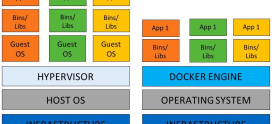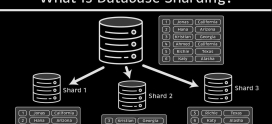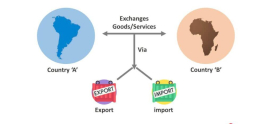
The Role of CDNs in the Expansion of IoT Networks
Introduction
Have you ever wondered how your smart home devices communicate seamlessly? Or why your smartphone seems to connect so effortlessly to the web, whether you’re at home or on the go? Let’s be real: IoT, or the Internet of Things, can be a bit overwhelming at times, can’t it? With so many devices interacting in real-time, it’s easy to feel lost trying to comprehend how they all work together. But you’re not alone. Many people share your concerns, finding themselves scratching their heads over the complexities of connecting everything from smart fridges to wearable health monitors.
Fortunately, behind the magic of these connected devices lies a powerful system that makes this all possible: Content Delivery Networks (CDNs). Surprised? You might be! But think of CDNs like the reliable postal service of the internet, ensuring that your data arrives quickly and safely from point A to point B, no matter what obstacles might be in the way. You can breathe easier knowing that CDNs play a pivotal role in the expansion of IoT networks, bringing greater speed, reliability, and security to your devices. In this article, we’ll break down the nuts and bolts of how CDNs enhance the IoT experience and what that means for you as a user.
So, sit back, relax, and let’s dive into the fascinating world of CDNs and IoT networks!
Understanding the Basics: What are CDNs?
A Content Delivery Network (CDN) is a system of distributed servers that work together to deliver content to users more efficiently. Wondering how that translates to the everyday user? Imagine you want to watch a streaming video. Without a CDN, that video would have to travel all the way from its original server to reach you, which could take longer than you’d like. But with a CDN, that video is cached on servers closer to your location. This means you’ll experience less lag time and higher quality.
The primary goals of CDNs include:
- Improved speed: Reducing latency by delivering content from a location closer to the user.
- Enhanced reliability: Distributing traffic, so no single server becomes overloaded.
- Increased security: Offering a layer of protection against DDoS attacks and other vulnerabilities.
The Relationship Between CDNs and IoT Networks
Now that you have a grasp of what CDNs are, let’s dig deeper into how they are crucial for IoT networks. IoT devices often generate and transmit massive amounts of data. This data needs to travel quickly and reliably to ensure devices function correctly and users have a seamless experience. And that’s where CDNs come into play.
By using CDNs, businesses can efficiently manage the data from countless IoT devices simultaneously while ensuring that data travels the shortest and fastest routes. Think of it like how a good highway system facilitates smooth traffic flow in a bustling city: less congestion and reduced travel time.
Benefits of Using CDNs in IoT Networks
Integrating CDNs into IoT networks comes with several distinct advantages:
- Reduced Latency: With data being delivered from nearby servers, latency is significantly minimized, making real-time applications, such as smart home devices and healthcare monitoring systems, much more responsive.
- Scalability: CDNs can spread the load across various servers, which helps accommodate growing numbers of connected devices without sacrificing performance.
- Improved Security: CDNs often come with built-in security features, providing an additional layer of protection against cyber threats that IoT devices may be susceptible to.
- Reliable Data Delivery: High availability and redundancy ensure that data from devices is consistently accessible, regardless of traffic spikes or hardware failures.
Real-World Application: A Case Study
Let’s look at a real-world example to highlight the effectiveness of CDNs in IoT networks. Take, for instance, a smart city initiative where various IoT devices manage traffic lights, public transportation systems, and environmental controls like smart streetlamps. In such scenarios, thousands of devices are constantly communicating, sending, and receiving data.
By employing a CDN, the city can ensure that data from these devices is processed swiftly and securely. If a traffic light sensor detects an accident, the information can be relayed instantly to emergency services, helping them arrive faster. This case not only demonstrates the responsiveness of a robust CDN but also emphasizes the impact it has on public safety and urban management.
Security Aspects of CDNs in IoT
With the rise of IoT devices comes the pressing need for security. Each connected device is a potential entry point for cyber threats. Fortunately, CDNs can greatly enhance security for IoT networks. Here are some security features that CDNs often provide:
- Data Encryption: Ensures that data in transit is encrypted, making it difficult for unauthorized parties to intercept.
- DDoS Mitigation: Protects IoT networks from Distributed Denial of Service attacks by absorbing and mitigating excessive traffic loads.
- Web Application Firewalls (WAFs): Helps to safeguard application-layer traffic, protecting against common vulnerabilities.
The Future of IoT and CDNs
As we look ahead, the conjunction of CDNs and IoT networks will become increasingly vital. With the advent of smart cities and connected devices, the demand for real-time data processing will continue to grow. Experts predict that by 2025, the number of connected devices will surpass 75 billion, creating an unprecedented need for streamlined data delivery systems. CDNs will evolve to meet these demands, employing advanced technologies such as edge computing to facilitate even faster data processing.
Moreover, organizations may begin to customize their CDNs specifically for tailored IoT applications, enhancing user experiences even further.
Challenges Faced by CDNs in IoT Networks
Despite their many benefits, CDNs in IoT networks do face challenges. Some of these include:
- Device Diversity: With such a wide array of IoT devices with different capabilities, ensuring compatibility can be a hurdle.
- Data Load Management: Managing and processing vast amounts of data in real-time can be complex and resource-intensive.
- Latency in Edge Computing: While edge computing improves speed, it can still create additional latency if data needs to be aggregated from multiple devices.
Essential Considerations When Choosing a CDN for IoT
If you’re looking to select a CDN for your IoT applications, consider the following factors:
- Coverage and Reach: Ensure the CDN has servers located near your user base and IoT devices.
- Scalability: Choose a CDN capable of growing with your IoT network as more devices are added.
- Security Features: Evaluate the security measures offered, especially protection against DDoS attacks and data encryption.
FAQs
What exactly is an IoT network?
An IoT network consists of interconnected devices that can communicate and share data with each other over the internet. Examples include smart home devices, wearables, and smart industrial equipment.
How do CDNs improve the user experience in IoT?
CDNs enhance user experience by reducing latency, ensuring faster data delivery, and improving content accessibility, leading to a smoother interaction with IoT devices.
Can CDNs help with IoT security?
Yes! CDNs offer various security features like data encryption and DDoS mitigation, which help to protect IoT devices and services from cyber threats.
Are all CDNs suitable for IoT applications?
No, not all CDNs are optimized for IoT. When choosing a CDN for your IoT needs, look for one with features specifically designed to handle the unique demands of these networks.
Conclusion
understanding the role of Content Delivery Networks (CDNs) in the Internet of Things (IoT) ecosystem is crucial for anyone looking to maximize the efficiency and security of their connected devices. CDNs significantly enhance the user experience by minimizing latency, increasing reliability, and bolstering security. As devices continue to proliferate and the demand for real-time data processing intensifies, the synergy between CDNs and IoT networks will only grow stronger.
Whether you’re a consumer keen on optimizing your smart home setup or a business aiming to develop a robust IoT solution, leveraging the capabilities of CDNs can be a game-changer. As technology advances, staying informed about the latest developments in CDNs and IoT will empower you to harness the full potential of your connected devices.
We hope this article has shed light on how CDNs operate, their significance in IoT networks, and the benefits they provide. Keep exploring, and you’ll discover just how interconnected our world has become!









